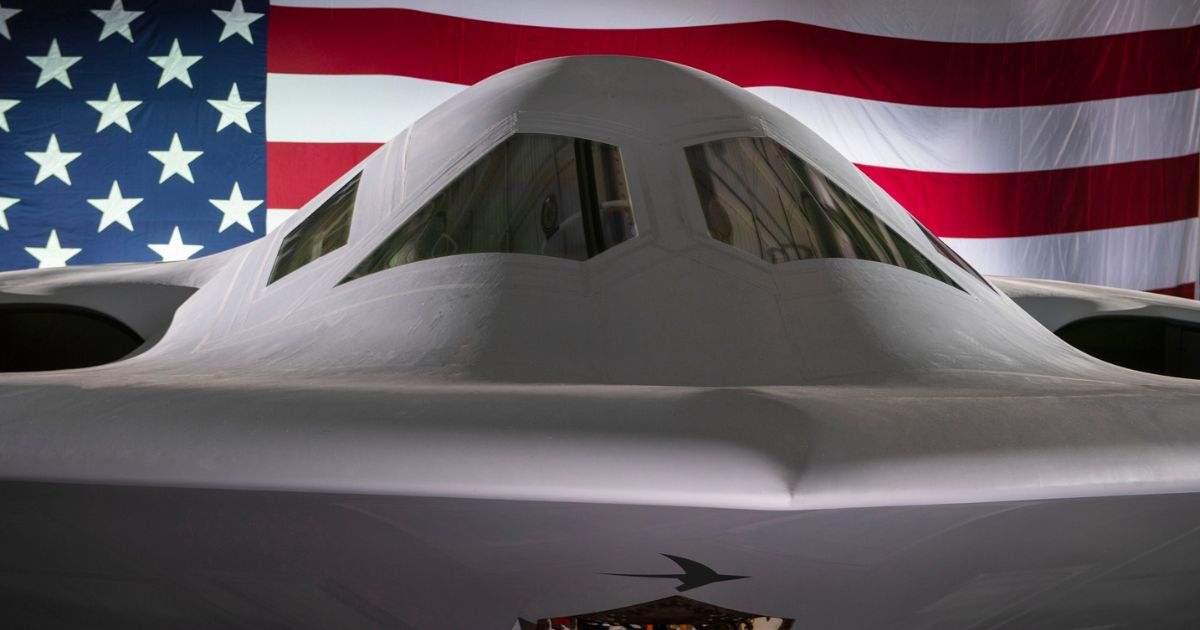The U.S. Air Force released images this week of its new B-21 Raider, which is scheduled for its first flight later this year.
The B-21, the new stealth bomber slated to replace the older B-1 and B-2 bombers, was designed to be part of America’s nuclear deterrent to help stave off the possibility of a nuclear conflict.
“The world has never seen technology like what Northrop Grumman developed for our B-21,” the company said on its website.
“Integrated deterrence is enabled by credible forces that are backstopped by a safe, secure, effective nuclear deterrent,” Gen. Thomas A. Bussiere, commander of Air Force Global Strike Command, told attendees at the 2023 Air and Space Forces Warfare Symposium in Aurora, Colorado, on Tuesday.
Bussiere noted Russia’s recent modernization of its nuclear arsenal, including “developing new exotic nuclear weapons systems” as necessitating an American response, according to an Air Force statement.
He also referred to “the Chinese intent to become the leading global economic and military power by 2050,” according to the statement, saying that the Chinese nuclear forces were “sprinting to parity” with the U.S.
“China and the CCP are sprinting to parity with their nuclear force – diversifying, expanding and modernizing at a pace that we haven’t seen since the Cold War.”
The B-21 was designed to be one of the “credible, modern systems” Bussiere said were necessary to convince America’s enemy’s that any attempt to wage nuclear war with the U.S. would not end well for them.
“Fundamentally, it’s all about combat credibility – we deliver long-range strike, and we provide nuclear and conventional deterrence,” he said.
The B-21 Raider is named after the Doolittle Raid of Apr. 18, 1942, which demonstrated that the Japanese mainland was vulnerable to American attacks by dropping bombs on and near Tokyo.
According to Northrop Grumman, the aircraft’s manufacturer, the B-21 will be capable of delivering both conventional and nuclear weapons.
“Six B-21 Raiders are in various stages of final assembly and test at Northrop Grumman’s plant in Palmdale, California,” the company said in November.
“The B-21, which we rolled out just a few months ago, will be the centerpiece for our Global Strike family of systems,” Air Force Secretary Frank Kendall said, according to The Drive. “The B-21 is projected to begin flight tests later this calendar year. Our goal is to get into production as quickly as possible with acceptable concurrency risk … overlapping some testing production.”
Both its manufacturer and The Drive noted that the B-21 was designed to be easy to maintain and upgrade.
The Drive also noted the aircraft’s “B-21’s sinister-looking windscreen and very unique [sic] side windows.”
Northrop Grumman said the Air Force planned to purchase at least 100 Raiders, but added — hopefully, no doubt — that “[s]ome defense analysts believe that the Air Force should plan to purchase at least 200 B-21s.”
“As adversaries continue to invest in and develop advanced weapons, the B-21 Raider will provide the United States with a strategic asset capable of penetrating enemy air defenses and reaching targets anywhere in the world — something approximately 90 percent of the nation’s current bomber fleet is incapable of doing,” the company said.
This article appeared originally on The Western Journal.

























 Continue with Google
Continue with Google